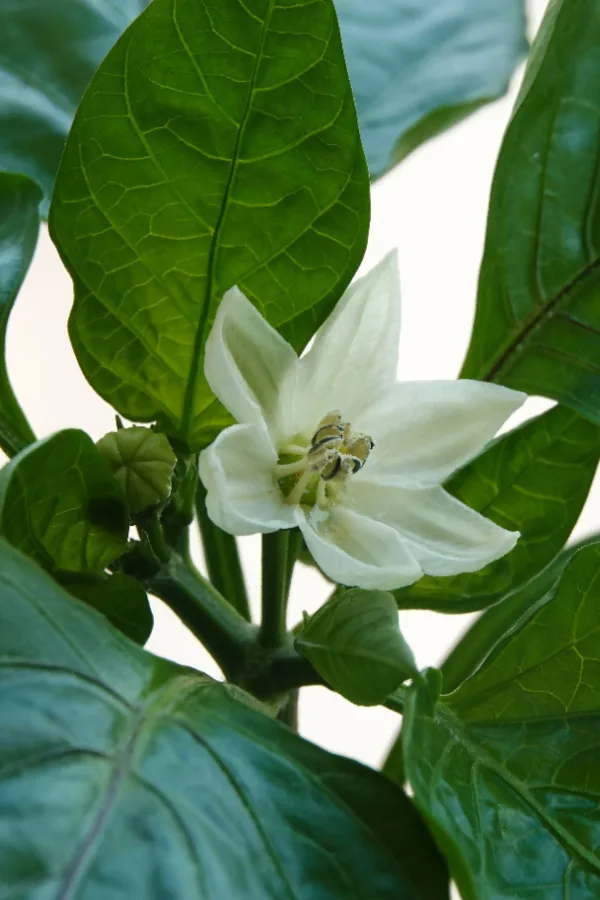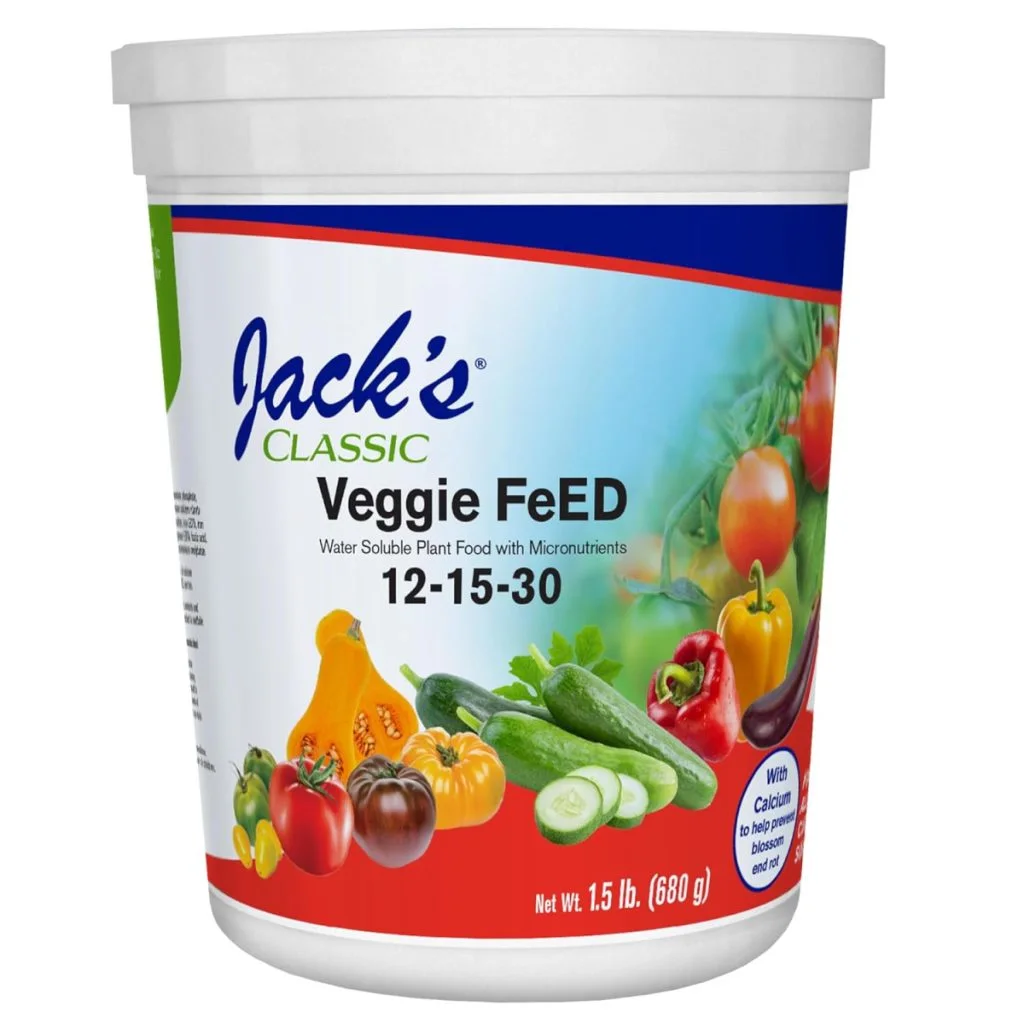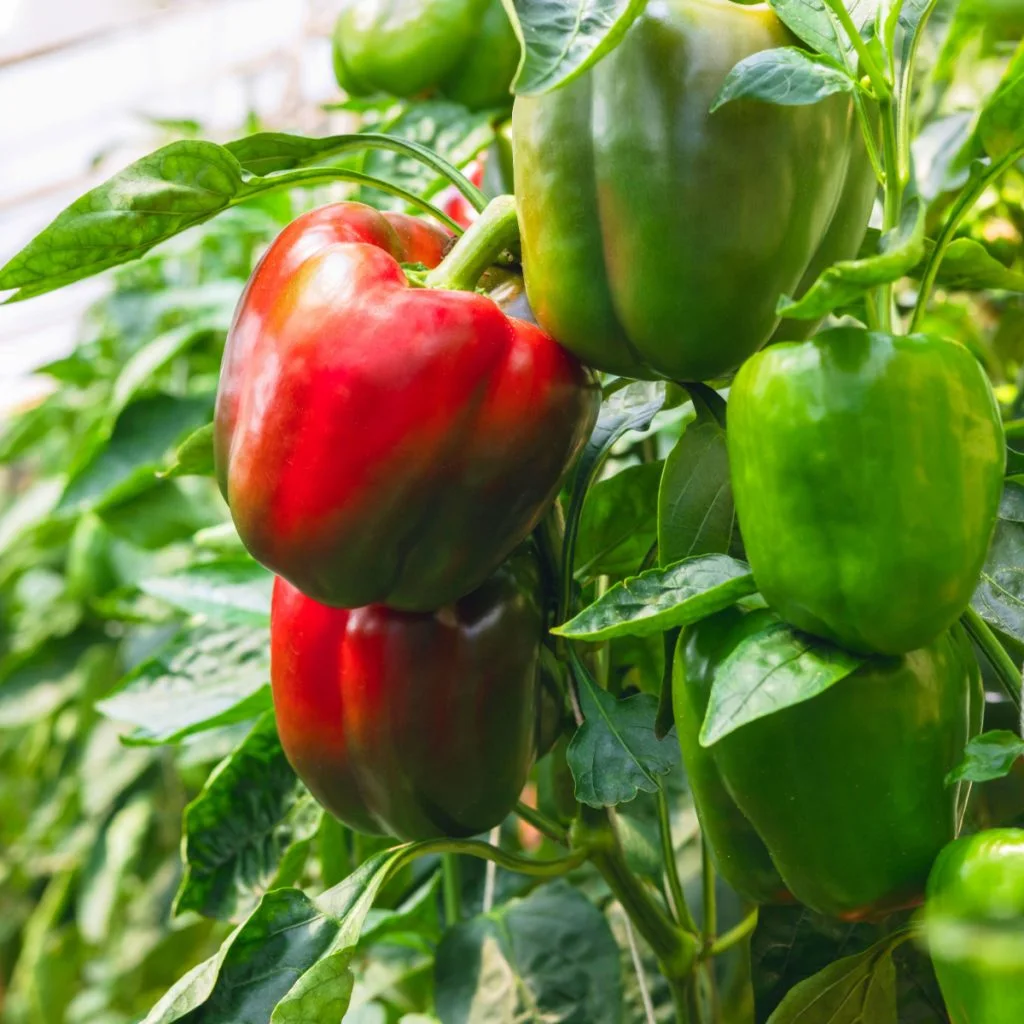Wondering how to fertilize your pepper plants this summer to get them to produce better than ever?
Pepper plants are one of the most productive crops you can grow in your garden, but only if they are given the right care at the right time. One of the biggest mistakes many gardeners make is assuming that once pepper plants are growing and producing fruit, they no longer need much in the way of attention. Especially when it comes to fertilizing!
But the truth is, whether you grow green bell, jalapeno, banana or sweet peppers, if you want your pepper plants to keep producing a steady supply of peppers throughout the summer and into early fall, you need to feed them properly.

How To Fertilize Pepper Plants In The Summer
Why You Need To Fertilize Pepper Plants In Mid Summer
Summer is the peak production time for most pepper varieties. It’s when they are setting blooms, forming fruit, and using up a great deal of energy to keep going strong.
Unfortunately, as the summer heat settles in and the plants are loaded with blooms and developing peppers, they often begin to struggle. The foliage might still look green and healthy, but production starts to slow. As the number of flowers drop, you’ll soon notice fewer and fewer peppers forming.
This is a classic sign that your pepper plants are running out of energy. While they may have had plenty of nutrients in the soil when you planted them in spring, by the time midsummer rolls around, much of that has been used up.
Once the soil is depleted of its nutrients, the plants can’t continue to produce at a high level. That’s exactly why knowing how and when to fertilize in summer can make all the difference. A difference between a light harvest – or one that’s bursting with peppers.

What Your Plants Need In The Summer
Understanding why pepper plants need fertilizing in the summer begins with knowing just how demanding they are when it comes to nutrients. Pepper plants are heavy feeders. Especially when it comes to the nutrients they need to flower and set fruit.
Early in the growing season, peppers benefit from nitrogen-rich soil that helps them establish roots and grow strong foliage. But once they begin to bloom and produce peppers, the nutritional needs of the plant shift.
At this stage, what your peppers need most is phosphorous and potassium – not nitrogen. Phosphorous helps the plant create and maintain strong root systems and fuels flower and fruit production. Potassium helps the plant carry water and nutrients through its tissues, which is especially important when the plant is under stress from heat or drought.
Together, these two nutrients help a pepper plant flower more, produce more fruit, and support that fruit through full maturity.
For More Gardening Advice, Listen In To Our Latest Podcast Below!

Unfortunately, many general-purpose fertilizers, especially those designed for use early in the season, have high amounts of nitrogen. While nitrogen is essential early on, feeding too much nitrogen in summer can cause more harm than good.
A pepper plant that gets too much nitrogen after it starts to produce will grow more leaves and stems instead of concentrating its energy on making peppers. That leads to lots of foliage but not many blooms or fruit.
Using The Right Liquid Fertilizer
To avoid issues, it’s important to use a fertilizer that is low in nitrogen and has a higher concentration of phosphorous and potassium. When looking at fertilizer labels, you’ll see a set of three numbers like 10-10-10. These numbers refer to the percentages of nitrogen (N), phosphorous (P), and potassium (K), in that order.
In the summer, a better choice for peppers would be something near the range of 10-15-30. These provide the nutrients needed for blooms and fruit while keeping nitrogen levels low enough not to encourage excessive leafy growth. Affiliate Link: Jack’s Classic 12-15-30 Veggie Feed Water-Soluble Fertilizer

Feeding The Right Dose
Another common mistake many gardeners make with fertilizing in the summer is not adjusting how they feed. Early in the season, a dose of fertilizer every few weeks might be fine.
But in the summer, especially during peak production, pepper plants need a different feeding approach. One that provides nutrients more frequently but in a gentler, more diluted form. This helps ensure a steady supply of the right nutrients without overloading the plant.
That’s where liquid fertilizers come into play. Unlike granular fertilizers, which need time to break down in the soil, liquid fertilizers are absorbed quickly by the plant’s roots and foliage. This fast-acting nature makes liquid fertilizers perfect for summer use, when the plants need a quick and steady supply of nutrients to keep blooming and fruiting.
When using a liquid fertilizer, the key in the summer is to dilute it to half strength. If the label says to mix one tablespoon of concentrate per gallon of water, use just one-half tablespoon instead.
By cutting the strength in half, you reduce the risk of overfeeding or damaging your plants in hot weather. It also allows you to feed your pepper plants more often – ideally every 7 to 10 days. This low-and-slow method of feeding provides a constant, manageable flow of nutrients that keeps the plant productive without overwhelming it.

Fertilizing For Success
To apply, simply mix the diluted liquid fertilizer with water and apply it directly to the base of each plant. Try to water the soil around the root zone rather than splashing it on the leaves, especially on sunny days, as this can lead to scorching.
Some gardeners also use a small watering can or sprayer to apply the mixture more precisely. For even better results, apply the fertilizer when the soil is slightly moist rather than bone dry, as dry soil can make it harder for the plant to absorb nutrients.
Don’t forget that watering and fertilizing go hand in hand. Without adequate moisture in the soil, pepper plants won’t be able to take in the nutrients you’re feeding them. During hot weather, be sure your plants receive consistent water.
This means watering deeply when the top inch or two of soil becomes dry. Shallow watering only encourages shallow roots, which aren’t as effective at absorbing nutrients or resisting heat.
By combining regular light feedings with proper watering and a good fertilizer choice, your pepper plants will keep flowering and producing fruit well into the late summer and early fall! For more on peppers, check out our article: How To Know When To Pick Your Peppers!
Simple Garden Life
Follow Our Facebook Page For Even More Great Tips! Simple Garden Life Facebook Page
Simple Garden Life is a website dedicated to keeping gardening fun, simple and enjoyable! We publish two new articles each week along with a new garden podcast episode every two weeks. This article may contain affiliate links.
